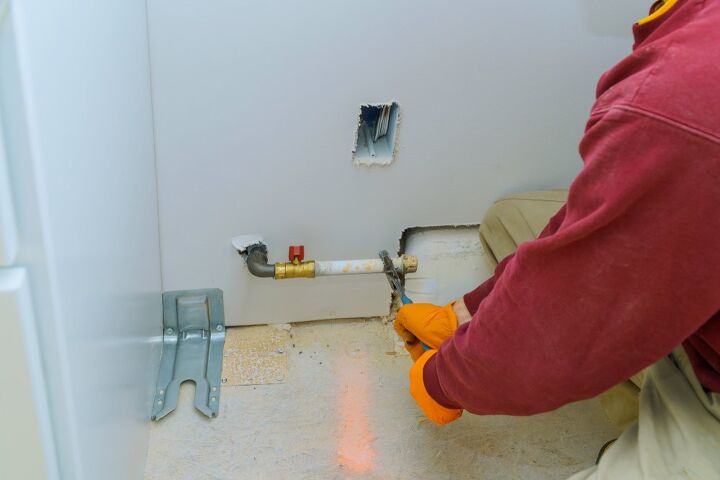How Far Does A Gas Line Have To Be From Electrical?

When it comes to building a new home, safety is paramount. As a result, you must exercise caution when handling critical materials such as gas and electricity.
If not handled appropriately, both gas and electricity can be harmful. And, if the lines are too near together, any problem with one of them can have a negative impact on the other. How far apart should a gas line and an electrical circuit be?
A minimum spacing of 25 mm must be maintained between your gas line and the electric circuit. Keep in mind that the distance may be affected by a variety of circumstances. These factors include the circuit type, cable strength, and the risk posed by these appliances. Placing them closer poses a serious risk of danger.
We’ll go over everything you need to know about electrical outlets and gas lines in this article. Let’s get started!
Do You Need Gas Line Installation or Repair?
Get free, zero-commitment quotes from pro contractors near you.

Distance Between Gas Line And Electrical Circuit
When it comes to the distance between gas lines and electrical components, there are a few things to keep in mind. While having them close together won’t cause an accident right away, it’s crucial to keep them separated.
Authorities have specified specific minimum spacing dependent on the type of electric line that you are worried about. It’s important for you to remember, however, that these figures may vary depending on where you live.
Between Electric Cables And Gas Lines
Electric wires and gas lines are both relatively safe on their own. They’re usually well encased and covered to avoid any mishaps or leaks. Even so, it’s preferable to be safe than sorry.
We recommend that you keep the spacing between the appliances at least 25mm. However, if you have issues with common wire becoming hot, you may want to increase the distance.
It may be difficult to keep your electric lines separate in some situations. If that’s the case, make sure they’re as far away from each other as realistically possible. To avoid damage, make sure your insulation and sheathing are up to par.
Between Gas Meters And Electric Circuits
Gas meters, like electric meters, can be quite frightening. A defective gas meter can cause serious damage to your system if it is not properly maintained. As a result, the distance between them must be considered.
If your electric circuits are well-built and well protected. You must still maintain a distance of at least 150 mm between them. These standards apply to electric control, switchboards, and sockets, as well as consumer appliances.
Between Gas Lines And Electric Meters
Electric meters use a lot of electricity and require a lot of attention. There’s always the potential of an accident if you’re not careful around them. And any problems with the electric meter in close proximity to a gas line can be deadly.
Between the electric meter and any gas line, keep a space of at least 3 feet (914.4mm). If your system is at risk of utilizing too much power, this is critical. There is a risk of accidents when using power-intensive devices to connect a 15 amp switch to a 20 amp circuit. As a result, you must keep the distance in mind.
Things To Keep In Mind Before Placing Your Lines
Now that we’ve gone over the required distance, there are a few things to keep in mind when you are placing the lines. These are critical safety considerations that every homeowner should look to. It’s dangerous to compromise these.
Choose The Right Materials
Both electric and gas lines are extremely flammable. Any form of neglect can severely harm them, increasing the chance of an accident. As a result, you must ensure that the material is both durable and safe.
When it comes to gas, choose materials with caution. Copper wires are plentiful, yet they are extremely dangerous. As a result, we advocate combining copper with materials such as galvanized steel or CSST. You can protect yourself from a variety of electric safety concerns by using the correct materials.
Prevent Obstructions
Obstructions are the worst enemy of your wiring and gas pipes. Despite the fact that pipes and wires are very pliable, they are both prone to damage. Make sure you plan for the first if there are any sharp corners or edges.
Bending them too far can cause irreversible damage to the wires. As a result, the chance of leaks and breakage increases. Also, ensure there are no sharp objects near the wires that could break them.
Another crucial consideration is moisture. If you have water dripping in your ducting or elsewhere, check to make sure your cables are protected.
Use Expert Advice Whenever Necessary
Both gas and electricity are extremely flammable and must be treated with caution. Any mishap involving them may be disastrous. So, if you detect anything troubling, don’t hesitate to get assistance.
Fix the problem right away, whether it’s a leaking pipe or a damaged cable. However, in such instances, we recommend that you consult an electrician or a plumber.
Do You Need Gas Line Installation or Repair?
Get free, zero-commitment quotes from pro contractors near you.

When You Should Hire A Professional
Sometimes it’s best to hire a professional, especially when it comes to electrical and gas lines. If you are uncomfortable with this job, or situation, it’s best to hire professional help. Or, if the job is complicated, then you’ll need to hire someone.
How Much Will A Professional Cost?
To install new gas and electrical lines will cost between $260 and $850. It all depends on the circumstances that you have going on with the project.
You should speak with at least three contractors and have them give you their bids so you can ensure you’re paying the best price. Also, don’t forget to ask what is all included in their bids so that you know if you have any additional out-of-pocket costs.
Always remember, though, that cheaper doesn’t always mean the best deal. Someone could pitch you a bid of $350 but have nothing included including the hardware, while another company could say $400 and it includes all you need.
Something else to look into is the reputation the contractor or company has that you are considering. This way, you’re almost guaranteed a job well done.

Heather is a passionate writer who loves anything DIY. Growing up, she learned everything from home repairs to design, and wants to share her tips with you. When she's not writing, she's usually hiking or searching for her next DIY project.
More by Heather Robbins












![The 5 Best Angle Grinders – [2022 Reviews & Buyer's Guide]](https://cdn-fastly.upgradedhome.com/media/2023/07/31/9071326/the-5-best-angle-grinders-2022-reviews-buyer-s-guide.jpg?size=350x220)














